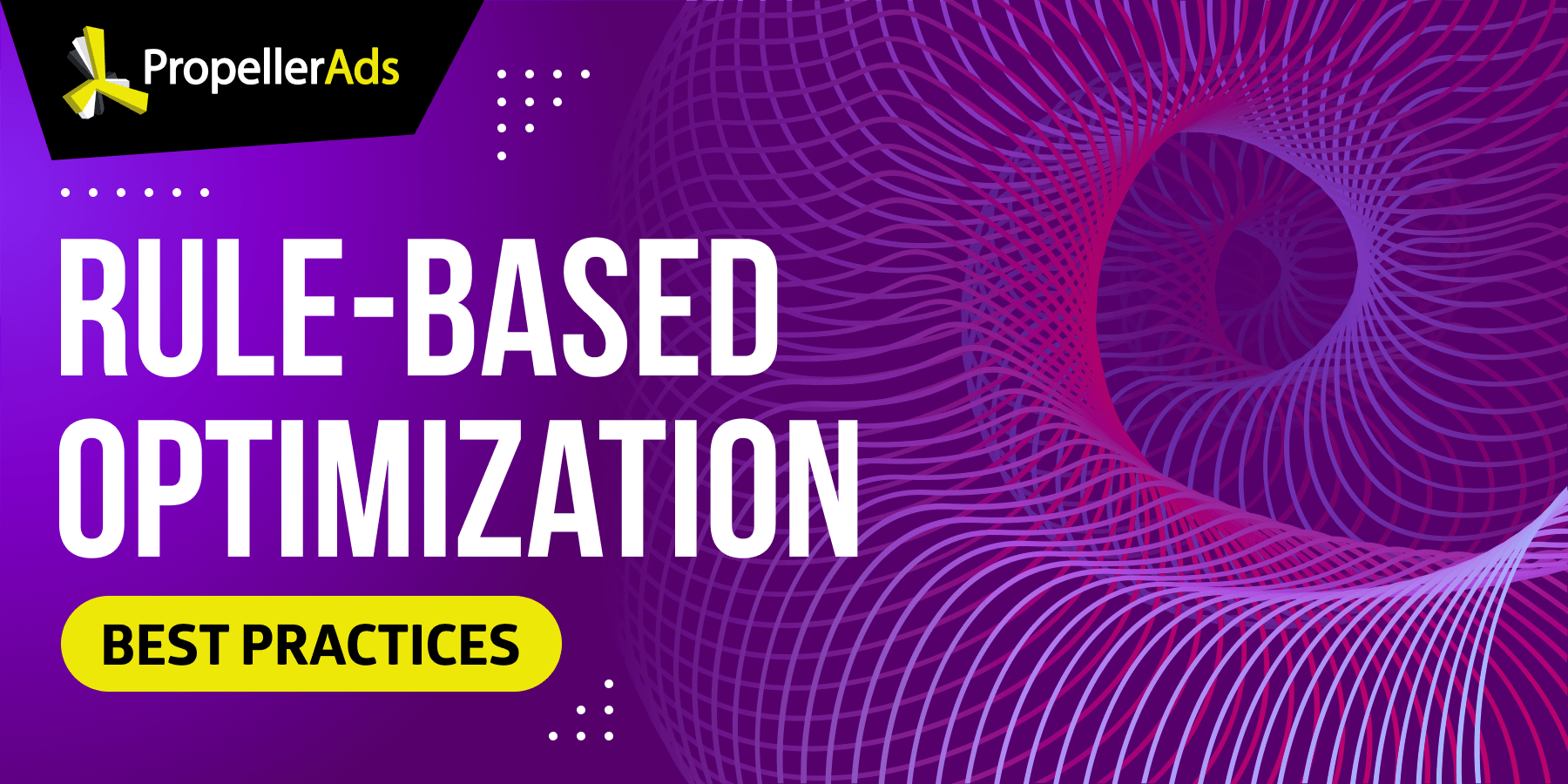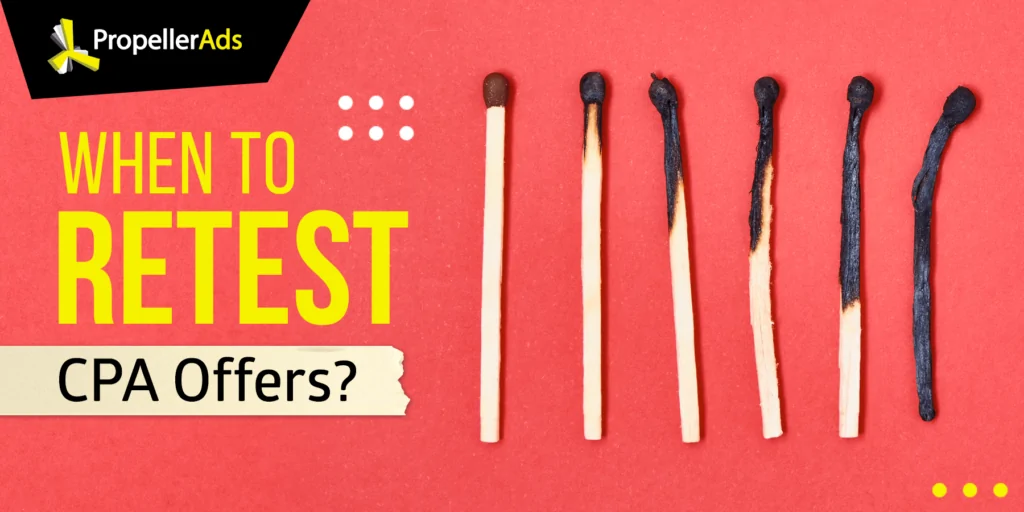Rule-Based Optimization Best Practices: IF (ROI > 300), THEN 🍾?

This post is also available in:
ES
So, you want to run more cost-effective campaigns, fight competitors, or block ineffective zones. But you want to set these and a few other optimization strategies on auto-pilot based on your campaigns’ future performance.
Too bad that you can’t just automate this process, to change specific preset values from your campaign initial settings…
Oh, but that’s right! With our new and improved Rule-Based Optimization you can. Moreover, you can do it for all your Push ads and Interstitial ads CPC campaigns.
This feature allows you to set them on a better course. Exactly: based on their future performance!
Find out more about the Rule-Based Optimization
What exactly can you do with Rule-Based Optimization?
For start, you’ll be able to change bids or exclude zones depending on the Spend size. But also based on the conversion number, or once other KPIs reach certain values.
Rule-Based Optimization also gives you several solutions to stop a campaign that had a good start, but later on, might go against you.
So, clearly, we had to check some common mistakes that advertisers made while using this feature and come up with some best practices. From those, we compiled a list of what you should keep in mind. Along with some mistakes to avoid.
Best Practices to Make the Most of Rule-Based Optimization
In this part of the article, you can expect to find real-life examples. Our Account Managers found these while working with other advertisers, media buyers, and affiliate marketers just like you.
We’re sure they’ll help improve the way you use this feature.
#1. Remember that this is a Zone-Based Optimization
As this is a rule that allows you to optimize by zone, you always need to keep in mind the flow of your offer. If we’re talking about a pretty light one, then 10 conversions might be good enough for 1 zone.
From this point of view, you should also stop comparing your performance with that of other professionals in the industry.
In order to have a relevant scenario, you’ll need to duplicate the exact same campaign, during identical events in time (and sadly, we still didn’t crack time-travel ?).
But at least we’ve got the next best thing – Rule-Based Optimization – automatically telling your campaigns, which way to go in the future.
Also, remember that the traffic exposed to your ads can be impacted by everyday events. Maybe there’s a special Holiday discount or offer in that GEO, maybe based on the publisher the users can be more or less reactive. And the list can continue.
If we’ve said this once, we’ve said it 100 times: the only way to define your performance is based on your own tests.

Find out more about custom zone bidding for CPC Campaigns
#2. Give your CPA enough space
When you set a new rule, make sure not to set a too tight CPA. Consider that some zones might have a higher CPA, while others have it lower. Try to make an encompassing enough average of those values.
Now, based on this value, you can choose what will happen with your campaigns. If the traffic that you are getting is too expensive.
Then you can either exclude the zone, or leave more space for it if you find the CPA good enough for the number of conversions you’re getting.
In fact, before you remove a zone from your campaign targeting, try to allocate at least double your target CPA. This way, even if on certain zones you might get a $0.20 higher CPA, on others it might get $0.70 lower. In which case you’d still profit more.
But of course, you should aim to get a CPA that’s as low as possible. And if you can’t reach that, and the campaign isn’t performing, you can limit to just excluding the zone. The same goes if it’s too complicated for you to reach a profitable CPA.
#3. Cleverly time your rule
The Rule Tracking Period can be set for 1 hour, 24 hours, or 1 week. Keep in mind that this is a time frame that dictates after which period your rule will repeat.
But, at the same time, it’s a time frame for statistics. Our platform will track the parameters set in a rule for the specified time interval.
And it’s extremely important to give your Rule plenty of time to gather enough data and properly optimize your campaign. This way you’ll set it off on the best track.
Otherwise, you risk eliminating good zones that just didn’t get a chance to show their worth. And you’ll miss out on some pretty nice potential profit.
So, consider setting your rule from the start for at least 24 hours, or even 1 week.
#4. Go bid, and stay sharp
Don’t be scared to increase bids if conversions are pouring in. If you see that a particular zone is delivering higher conversions than others, you can increase your bid to make sure that you get more of that traffic.
However, it’s best to also set a maximum bid. Otherwise, if it continues increasing, at a certain point it might not be profitable anymore.
#5. Work for your ROI
Just as it’s the case with the CPA, make sure to keep in sight your Return on Investment (or ROI), as well.
So, if a campaign brings you a high ROI, don’t be scared to increase the bid. The stop limit also counts here as well.
Also, we know that the urge to run a whitelist campaign is big, but you might get even more if you’re fine-tuning your campaign, to improve as it goes.
#6. Run effective tests
Don’t just resume to eliminate a rule from the start, once you get a first inefficient test result.
Instead, make sure to test your rule during various time-frames. But also try to test during different days of the week.
This way you’ll get the most accurate results, and probably find an optimal time and day, for highly effective rule-based optimized campaigns.

Need more help with running relevant tests? Check this out
#7. Adapt your rule for the vertical
Although it might sound like a no-brainer, this is something that many affiliates seem to lose out of sight. But, you need to adapt your rules, based on your vertical.
So, when you’re setting up the rule, remember to adapt your variables based on actual campaign performance indicators of the industry. Don’t go for a bid that’s too big for the vertical, and definitely don’t set unrealistic ROIs or CRs.
For example: You might see that on the Utilities vertical you have a lot of conversions in an hour. Your Rule Based Optimization will do its job during that time. And, as the system collects a lot of conversions, it’s going to spot the bad zones a lot faster and easier, and take the needed actions.
The Ultimate Beginners Guide to Affiliate Marketing Verticals
And the opposite goes: Based on the time of the day, on the iGaming vertical you might notice a zone with only a few conversions. So, the Rule-Based Optimization wouldn’t perform as well, and as fast.
As long as you keep your values real, and updated for the vertical, time frame, time of the day you’re more likely to have good results.
IF (ROI > 300) {open_wine();} ?
That’s right Dmitry, we see you ?. Just as we see Svet0Slav, Ettore, Garbis, and all the other ones of you. We love that you’re active, and keep on fueling us with the right energy and ideas. So, thanks for helping us help you. You guys are the real MVPs!
And to give you an answer for when we’ll launch the Rule-Based Optimization for Popunders: Our team is working hard on getting this rolled out as soon as possible. So, you’ll probably be able to use it sometime this year.
Also, although for the moment you can only set 1 rule per campaign, we plan on giving you more control over it. So we’re also working on allowing you to set more rules. And maybe even to set a rule for more campaigns, at once.
We’re full speed ahead in working on smaller and bigger updates, for sometime in the coming future. And we know that you’ll appreciate them.
So there’s really one last question left for you to answer: What will it be – red ? or white ? ?
Last but not least
Keep in mind that these are campaigns like all others. So there’s really nothing stopping you from manually optimizing your campaigns. Especially when you notice there’s something good coming from them.
Go ahead and duplicate your Rule Based Optimization campaign to get more traffic from a CPA campaign, if you want to. Although the rule won’t be duplicated with the campaign, you’re welcome to add it, immediately after it’s launched.
Check successful slices and choose the zones or specific targeting that get more traffic for you.
And most importantly, don’t be afraid to be creative! For everything else:
Come meet like minded affiliates and advertisers, on our Telegram Chat.





